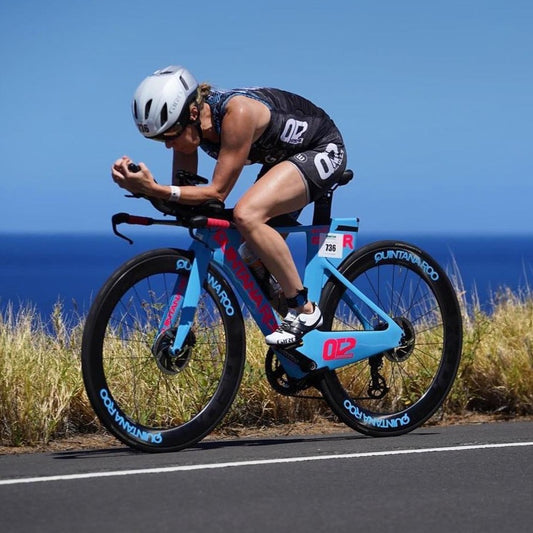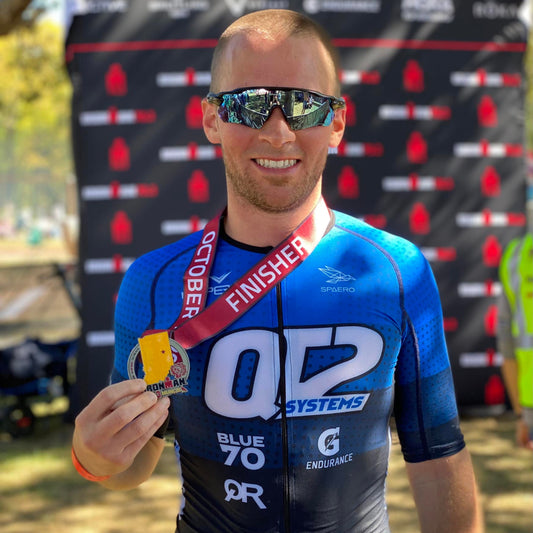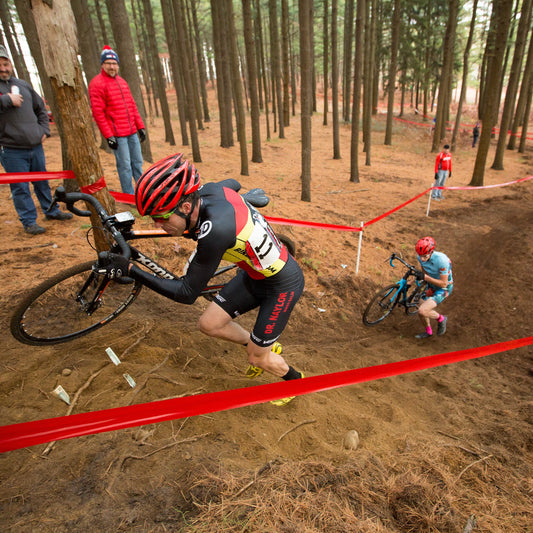If you’re putting in more training hours than ever but still not hitting your speed goals, you’re not alone. Many endurance athletes—especially those who love the grind—find themselves stuck in a cycle where they feel incredibly fit but aren’t actually getting faster. They can train all day at a steady pace, yet when it’s time to push hard in a race or a high-intensity session, their body doesn’t respond the way they expect. If this sounds familiar, the issue likely isn’t a lack of effort—it’s a lack of recovery and intensity balance in your training.
More Volume Doesn’t Always Equal More Speed
For many triathletes, training is as much about enjoyment and routine as it is about performance. We love the miles, the structure, the feeling of accomplishment. It’s easy to believe that more volume equals more progress. But at a certain point, more isn’t better—smarter is better.
Speed and power don’t come from endlessly adding more training hours. In fact, constantly pushing high volume without adequate recovery leads to chronic low-grade muscular fatigue—a state where your aerobic system feels fine, but your legs never feel fully fresh. As a result, when you need to tap into high-end power for race surges, intervals, or key workouts, it just isn’t there.
The Fatigue You Don’t Feel—But That’s Holding You Back
One of the biggest challenges for high-volume athletes is that they don’t feel tired in daily life. You may have plenty of energy, feel motivated, and be able to cruise at a steady-state effort without issue. But that doesn’t mean you’re primed for speed.
There’s a difference between general fatigue (which you feel in day-to-day life) and performance fatigue (which quietly robs you of your top-end power). The latter is what happens when your muscles never fully recharge between hard workouts. Your endurance stays strong, but your ability to generate peak power and speed gets blunted. When this happens, key intensity sessions feel harder than they should, and race-day surges feel impossible to sustain.
Are You Stuck in the “Training vs. Exercising” Trap?
Many endurance athletes unconsciously blur the line between training for performance and exercising for fitness. They love the feeling of movement so much that they start treating every day as a “training day,” adding extra sessions, bonus runs, or long workouts that aren’t programmed for a specific reason.
While this might work for general fitness, it’s not an approach that leads to peak performance. Every training session should have a purpose. That purpose might be building endurance, sharpening speed, or allowing for proper recovery—but when you constantly add extra work, you’re unintentionally shifting every session into a grey zone of too hard to be recovery, but too easy to create true speed adaptations.
The Solution: Train for Speed, Not Just Endurance
If you want to unlock your true race potential, the solution isn’t to train more—it’s to train smarter. That means giving your body the recovery it needs to actually absorb and adapt to the hard work you’re putting in. Here’s how to start:
1. Protect Your Hard Workouts by Arriving Fresh
-
Stop sabotaging your key intensity sessions with unnecessary volume on your recovery days.
-
Ask yourself: Am I showing up to my interval sessions or key workouts with fresh legs? Or am I carrying fatigue from extra training?
-
If your hard workouts feel sluggish or lack power, you’re likely not arriving fresh enough to maximize the benefits.
2. Recovery is an Active Part of Training—Not an Optional One
-
Recovery doesn’t mean doing nothing—it means giving your body what it needs to adapt.
-
Instead of sneaking in extra runs, focus on mobility, active recovery, and structured recovery days that allow for full muscular repair.
-
Trust the process—remind yourself that elite athletes prioritize recovery just as much as they do hard training.
3. Track Your Speed Progress—Not Just Your Weekly Hours
-
Many endurance athletes only track total volume, but what really matters for race-day performance is your ability to generate speed when it counts.
-
Instead of only logging miles, track things like:
-
Interval splits over time
-
Heart rate response to intensity
-
Your ability to hit and sustain target paces when rested vs. when fatigued
-
-
If your intensity work isn’t improving, it’s a sign that you’re carrying too much fatigue from unnecessary volume.
4. Redefine Your Training Identity
-
If you’ve always seen yourself as someone who “outworks the competition” through sheer volume, it can be hard to shift your mindset.
-
But remember: The fastest athletes aren’t always the ones who train the most—they’re the ones who train the smartest.
-
Start thinking of recovery as a weapon, not a weakness.
Less But Better: Your Secret to Unlocking Performance
The bottom line? If you’re putting in more hours than ever but not seeing the speed gains you want, the problem isn’t effort—it’s training distribution. You’re already doing the hard work. Now it’s time to train in a way that lets you access the speed you already have.
When you balance volume, intensity, and recovery properly, you’ll start to notice: ✅ Your hard workouts feel better, not worse.
✅ You can sustain high-end effort without fading.
✅ You actually feel powerful on race day, instead of just aerobically fit.
So take a step back and ask yourself—are you truly training to get faster, or are you just training more? The answer could be the key to unlocking your next breakthrough.









